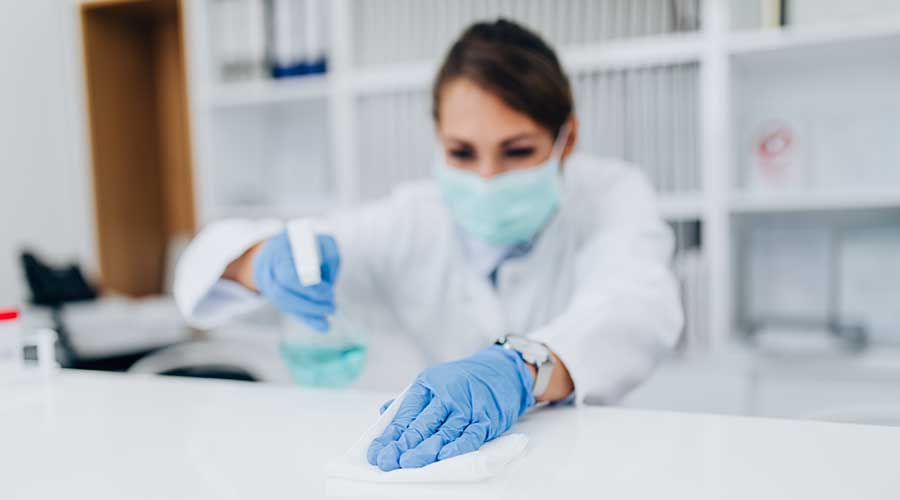Pathogen Removal Strategies for Infection Control

There is growing appreciation of high-touch environmental surfaces as vehicles for pathogens in hospitals and other healthcare settings.
For the first 20 years of my career as a leader in a hospital environmental services (EVS) department, I understood that contact time and wet time are critical factors in the effectiveness of a disinfectant. If the contact time is not met, the disinfectant might not have sufficient opportunity to eliminate the microorganisms effectively. Similarly, if the wet time is not followed, the disinfectant might dry too quickly, reducing its efficacy.
I believed that a disinfectant’s contact time on a surface was essential to a pathogen’s demise. Then I found out that there was no additional bactericidal effect after a product dried. In other words, extended contact times beyond when the product dries will not enhance disinfection.
There is growing appreciation of high-touch environmental surfaces as vehicles for pathogens in hospitals and other healthcare settings. There is also a corresponding increase in products and procedures for surface decontamination.
Such routine practices remain suboptimal and, indeed, counterproductive because cursory wiping of surfaces can spread pathogens over a wider area while loading the environment with potentially unsafe chemicals, according to a study by Dr. Syed A. Sattar.
Barring no-touch technologies, chemical decontamination of surfaces invariably includes a wiping action. But current and widely accepted methods to assess environmental surface disinfectants do not incorporate the physical action that is so critical for dislodging and removing dried contamination to allow better access to and action by the disinfectant.
As a result, testing with static – no wiping action – protocols and the label claims based on them only show the microbicidal potential of a given formulation without indicating its ability to perform under actual field use. A need exists to generate test data on such formulations via a dynamic – combining physical action of wiping with chemical disinfection process – test protocol to better reflect field use of the process. Such information would better inform disinfectant manufacturers, government regulators, infection preventionists and EVS leaders.
Multiple scientific studies have demonstrated the efficacy of disinfectants against pathogens causing healthcare-associated infections with a contact time of at least one minute regardless of what the label states.
The only way an institution can achieve a contact time of 10 minutes is to reapply the disinfectant five-six times to the surface because the typical dry time for a water-based disinfectant is 1½-2 minutes.
Healthcare facilities are achieving surface disinfection of non-critical patient care items and environmental surfaces by one application of a disinfectant and requiring a dry time of more than one minute.
Just as important as disinfectant contact time is the application of the disinfectant to the surface or equipment to ensure all contaminated surfaces and non-critical patient care equipment are wiped. Current studies demonstrate that only approximately 50 percent of high-risk objects are effectively cleaned at terminal cleaning.
I believe the guideline allows EVS departments to continue using hospital disinfectants for noncritical environmental surfaces and patient-care equipment with a one-minute contact time. Managers also should re-emphasize the thoroughness of cleaning to ensure that all contaminated surfaces are wiped.
By J. Darrel Hicks, Contributing Writer
July 3, 2023
J. Darrel Hicks, BA, MESRE, CHESP, Certificate of Mastery in Infection Prevention, is the past president of the Healthcare Surfaces Institute. Hicks is nationally recognized as a subject matter expert in infection prevention and control as it relates to cleaning. He is the owner and principal of Safe, Clean and Disinfected. His enterprise specializes in B2B consulting, webinar presentations, seminars and facility consulting services related to cleaning and disinfection. He can be reached at [email protected], or learn more at www.darrelhicks.com.
The post "Pathogen Removal Strategies for Infection Control" appeared first on Healthcare Facilities Today

